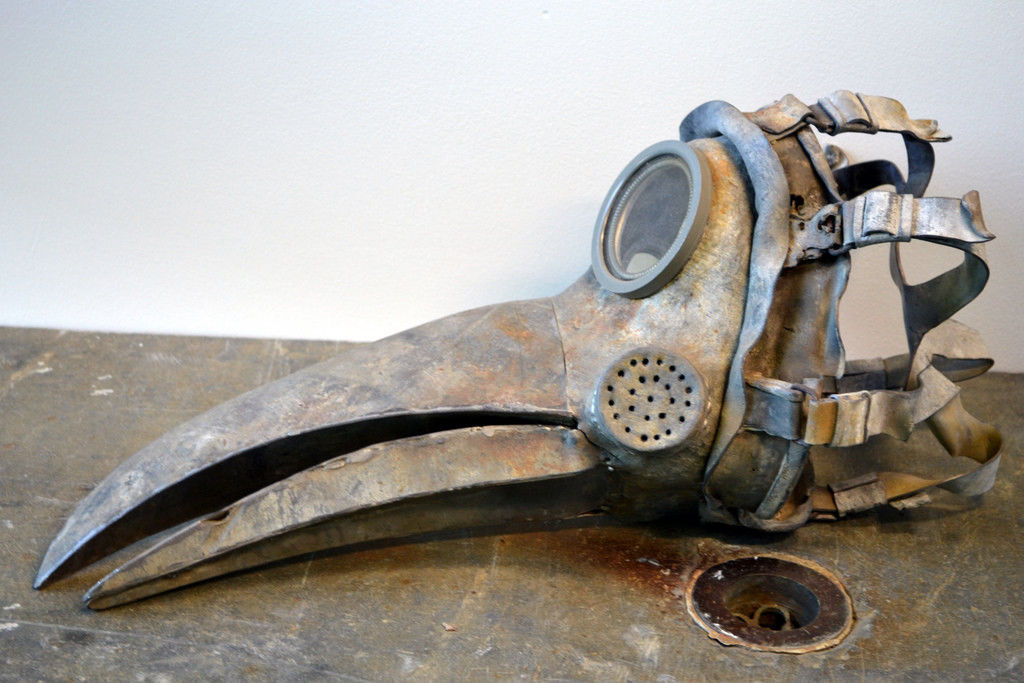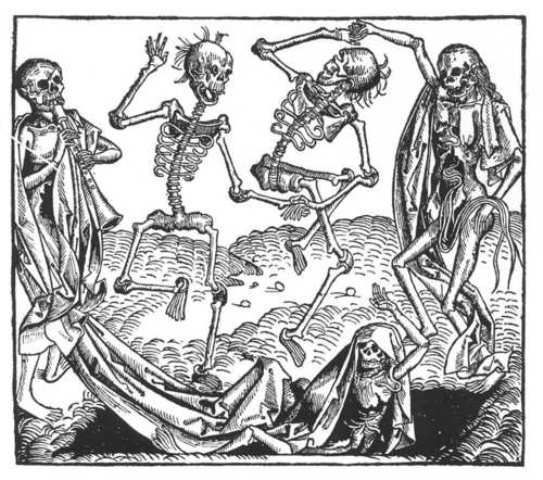In his last novel Inferno, Dan Brown decided to tackle the theme of global overpopulation, referring also to the Black Death (Peste Nera) of 1348, which killed a third of Europe’s population.
As in all his books, however, he prefers to ask questions of his readers rather than give them solutions.
What was the Black Death?
The Black Death was a pandemic that ravaged Europe between 1347/8 and 1351, taking a proportionately greater toll of life than any other known epidemic or war up to that time. The Black Death is widely believed to have been the result of plague caused by infection with the bacterium Yersinia pestis, an enzootic (commonly present) in populations of fleas carried by ground rodents, including marmots, in various areas.
Modern genetic analyses reveal that the strain of Y. pestis introduced by the Black Death is ancestral to all extant circulating Y. pestis strains known to cause disease in humans. Hence, the origin of modern plague epidemics lies in the medieval period. Other scientific evidence has indicated that the Black Death may have been viral in origin.
Originating in China and Inner Asia, the plague was transmitted to Europeans (1347) when a Kipchak army, besieging a Genoese trading post in Crimea, catapulted plague-infested corpses into the town. The disease spread from the Mediterranean ports, affecting Sicily (1347); North Africa, mainland Italy, Spain, England, and France (1348); Austria, Hungary, Switzerland, Germany, and the Low Countries (1349); and Scandinavia and the Baltic lands (1350). There were recurrences of the plague in 1361–63, 1369–71, 1374–75, 1390, and 1400. Modern research has suggested that, over that period of time, the plague was introduced into Europe multiple times, coming along trade routes in waves from Central Asia as a result of climate fluctuations that affected populations of rodents infested with plague-carrying fleas.
The Black Death caused a huge historical change described by most historians as a demographic catastrophe, although some of them have referred to it as an event regenerating medieval Europe.
In Europe, according to this view, there could be a resurgence of this pandemic as a result of the renewal of its population.
Throughout history, though, the great plague of the 14th century has always been described as a nightmare, a terrible punishment by God, and an apocalypse.
The epidemic of the Black Death was also called the Great Death. Similar epidemics broke out simultaneously in Asia and the Middle East so that we can speak of a terrible pandemic.
An anonymous medieval chronicler described the situation:
The bells were not ringing and no more crying. The only thing we did was wait for death, who, now mad, staring into space, who widening the rosary, others surrendering to the worst vices. Many said: It’s the end of the world.
The medieval imagination often attributed the Black Death to the activity of evil witches or ethnic minorities or to unfavorable astrological conjunctions or divine punishment.
Physicians resorted to remedies produced by superstition and ignorance, which were intended to eliminate the negative humus from the body of the patient.
This practice involved cutting a patient’s vein and letting out the blood, considered to be infected. It usually had the effect of accelerating the death of the patient and transmission of the disease.
Even the religious processions and gatherings that were intended ??to calm the wrath of God instead actually increased the risk of infection.
Symptoms
Contemporary accounts of the plague often vary or are imprecise.
The most commonly noted symptom was the appearance of buboes in the groin, neck, and armpits, which oozed pus and bled when opened.
This was followed by acute fever and vomiting of blood. Most victims died two to seven days after initial infection. Freckle-like spots and rashes, which could have been caused by flea-bites, were identified as another potential sign of the plague.
What is the plague mask?
Dan Brown in Inferno writes about the symbol used to depict the Black Death: the plague mask, a black mask with a long beak, able to strike terror at once.

This symbol probably appeared during the 1348 plague in Italy, because the masks actually worn by Italian doctors allowed them to avoid contracting the disease during their visits to plague victims.
In fact, they thought disease was spread by miasma, a noxious form of “bad air.” To battle this imaginary threat, the long beak was packed with aromatic substances considered healthy, such as dried flowers, herbs, and spices.
The black color is a symbol of deep terror that sowed the Black Death in Europe, making people feel hopeless.
There is no evidence that it was actually worn during the 14th-century epidemic. Medical historians have in fact attributed the invention of the plague doctor costume (birdlike beak mask plus ankle-length overcoat) to a French doctor named Charles de Lorme in 1619.
He designed the bird mask to be worn with a large waxen coat as a form of head-to-toe protection, modelled on a soldier’s armour.
Consequence of the Black death
The plague created a series of religious, social, and economic upheavals, which had profound effects on the course of European history.
After it, European medicine made ??tremendous progress and moved away from the theories of Galen. Authorities soon let doctors dissect cadavers to study the causes of illness and death, which started a revolution in medical science.
In Europe, the Black Death had a great many consequences, one of the most important, often presented by Dan Brown in his books, is the appearance of religious sects and movements.
The official church no longer had the confidence of the population, and many Europeans relied on heretical or reform movements.
European cities were transformed indelibly from the plague.
The Black Death and its consequences in Florence
The Black Death of 1348 in Florence had effects similar to those it had in all of Europe.
In 1348 Florence had approximately 80,0000 inhabitants. In just two years, the population was reduced to around 25-30,000 people.
The city’s population was halved and stopped growing, so the empty areas within the city walls, provided by Arnolfo di Cambio for almost certain demographic growth, remained rural until almost the end of the nineteenth century.
In the mid-nineteenth century, some of these rural areas became large public spaces, such as Piazza D’Azeglio, Piazza Indipendenza, and the area that is now home to the train station of Santa Maria Novella.
Robert Langdon, the protagonist of Inferno, along with Dr. Sienna Brooks, spends all his adventures in the footsteps of the Black Death.
Speaking of symbols, Professor Langdon stands in front of the Gates of Paradise by Lorenzo Ghiberti when he notices a plaque on the wall of the Baptistry of Florence, with the inscription La pesta nera (the Black Death).
Langdon says that the Gates of Paradise was commissioned to Ghiberti as a votive offering of the Florentine population spared by the epidemic.
The Florentine population was hit hard by the plague, even its celebrities.
Giovanni Villani, a famous Florentine chronicler, was killed by the Black Death in 1348, and his death was so sudden that his last writing was interrupted in the middle of a sentence!
The Black Death changed the face of Europe and continues to exert its tragic charm even today.
In Inferno Dan Brown invites us to think of this event that could turn even the human mind…
Today, thanks to strict public health measures and modern antibiotics, the plague no longer strikes great numbers of people, nor is it as deadly for those whom it strikes. Nevertheless, it still persists in some parts of the world where large populations of wild or domestic rodents harbour the fleas and occasionally pass them to humans.
We could tell a lot more about this topic, for now we stop here and recommend an eBook about it.
Pictures by Bizantine Military and Mask by El Bingle CC BY-NC 2.0
“This post was originally published on June 10, 2013, and has been updated and enriched on August 8, 2016”









so we are learning about the black death and I wanted to know more on the masks they used…….. can u help me out??
Dear Grayson, can you wait a little more? We will do another post this month dedicated to the Black Death. 😉
Why was it called black death?
Do you know the name of the mask used?